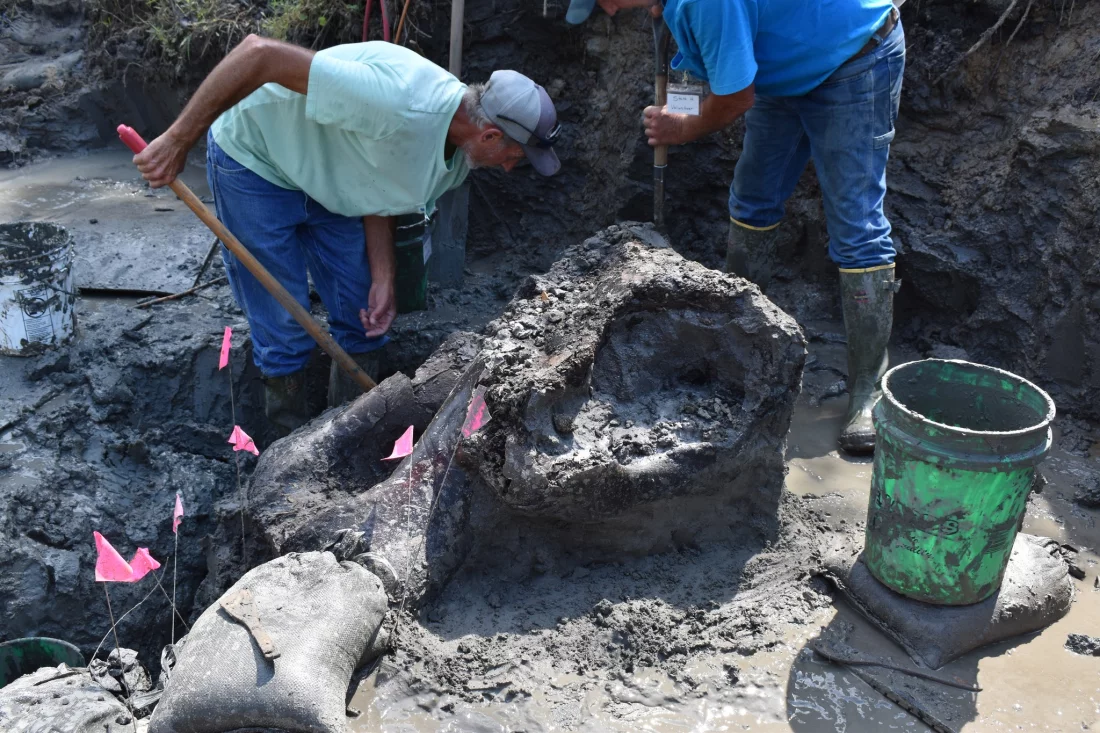A 13,600-year-old mastodon skull is unearthed in an Iowa creek
Iowa researchers have excavated the state’s first well-preserved mastodon, a 13,600-year-old specimen found in the southern part of the state.
The 12-day excavation, involving staff and local community members, yielded several mastodon bones, primarily from the skull. Radiocarbon dating indicates the mastodon is around 13,600 years old.
Researchers will now scrutinize the bones to look for evidence of human activity, such as cut marks. They are hoping to find evidence of human interaction with the creature, such as projectile points and knives used to kill the animal and perform initial butchering.
The American mastodon, or Mammut americanum, is a member of the same order as modern-day elephants.

Having stood at nearly 10 feet fall with twisty tusks, mastodons existed from 3.5 million years ago to roughly 10,500 years ago, according to the University of Iowa. Their fossils have been discovered across North and Central America.
Iowa archaeologists said the site of the dig along an eroding creek bank in Wayne County was first brought to their attention in 2022.
The mastodon bones will form part of a new exhibit at the Prairie Trails Museum in Corydon, Iowa, after conservation and analysis is finished at the university.

